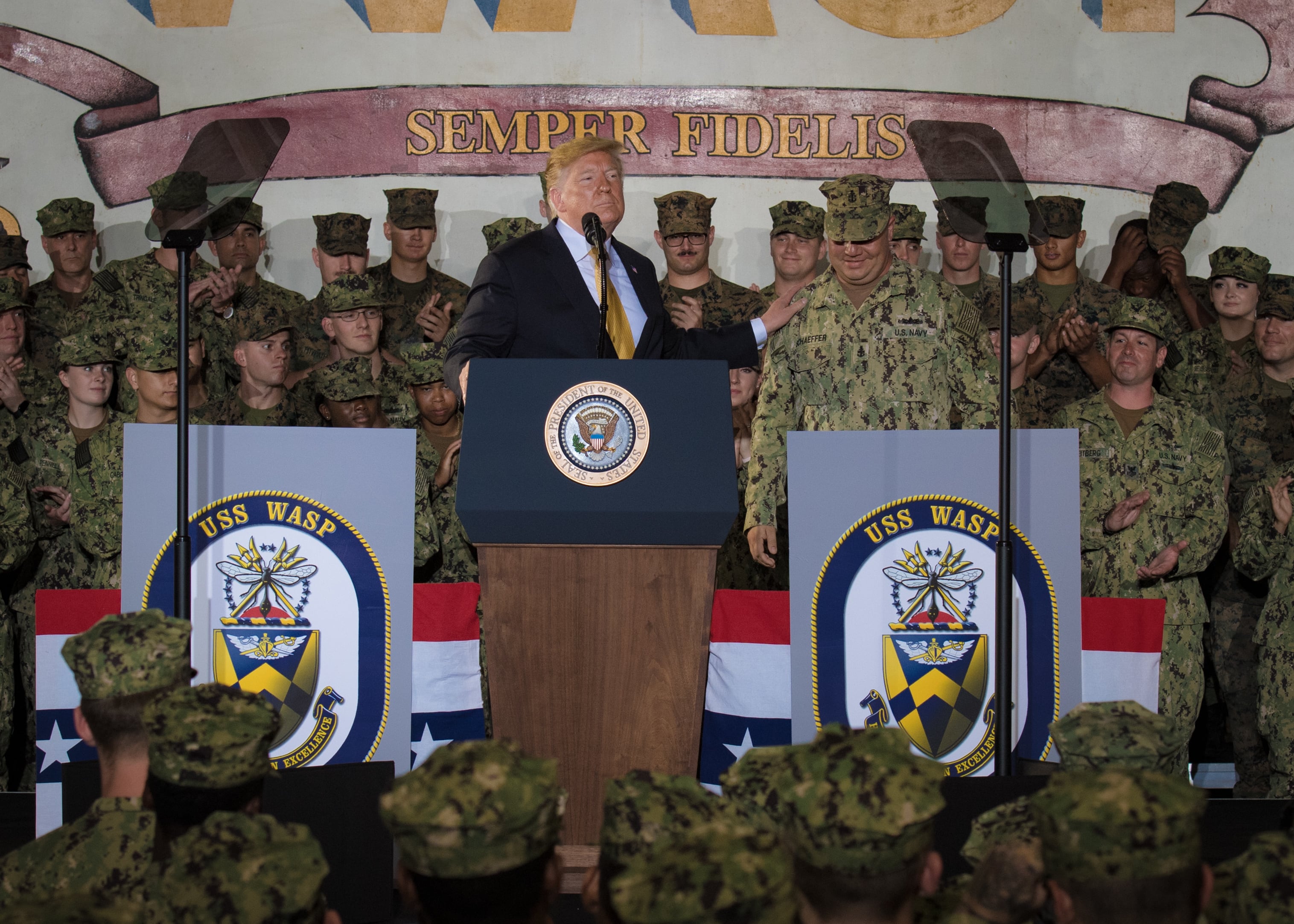The clock is ticking. The Pentagon has until the end of this month to get a secretary confirmed before Congress and the White House get involved with the Defense Department’s long-vacant top job.
Following former Defense Secretary James Mattis’s resignation last year, and the June nomination withdrawal of his no. 2, former Deputy Defense Secretary Patrick Shanahan, top defense officials are putting together contingencies for keeping leadership in place at the department after multiple setbacks. Best case scenario: Acting Defense Secretary Mark Esper, who had been serving as Army secretary since late 2017, gets a confirmation hearing and a Senate vote in the next couple of weeks.
“Our expectation is that’ll be shortly,” a defense official told reporters on background Tuesday.

Under federal law, Esper cannot be considered for the Pentagon’s top job while he serves in the “acting” role, so the plan is to send him back to the Army after the Senate announces they have received his nomination for SECDEF. Then current Navy Secretary Richard Spencer will step into the acting role during the confirmation process.
“Within the last two weeks, we’ve been spending time with Secretary Spencer, to get him ready,” SECDEF chief of staff Eric Chewning told reporters.
RELATED

As a service secretary, Spencer is familiar with the manning, training and equipping side of the job, but he “has not been exposed to the range of operational issues that the secretary of defense is responsible for,” Chewning added.
Meanwhile, in the services, Army Undersecretary Ryan McCarthy has been “performing of the duties of the Army secretary” since Esper took office on June 24, and Army general counsel has been performing the duties of the undersecretary.
McCarthy will go back to the undersecretary job while Esper awaits confirmation, then back to the acting role while he waits on a nomination to become the Army secretary proper.
It’ll be a similar case in the Navy. While Spencer moves to the acting SECDEF role, Navy Undersecretary Thomas Modly will temporarily fleet up to fill in for him in the “performing the duties of” role.
And in the office of the defense secretary, current Pentagon comptroller David Norquist will continue to serve as acting SECDEF while Esper awaits confirmation, then step down and be replaced by another senior official while he awaits his own nomination, for confirmed deputy SECDEF.
RELATED

Practically, all of the officials in place have the same authorities they would have if they were serving in the role as confirmed nominees, the defense official said. Any policy changes, or operational moves, are theirs to make.
The reason for all of this careful maneuvering is somewhat complicated: An official cannot be nominated for a role while they are currently serving as the “acting,” unless they were already the no. 2 in that organization.
That’s why Shanahan could be acting SECDEF during his nomination process. And you can’t call someone “acting” if there is technically already a confirmed official in that role, which is why McCarthy is “performing the duties of Army secretary,” and not serving as the acting Army secretary, as he did for much of 2017, while the service waited for a nomination to the top spot to come through.
“We’re also going to brief our allies and partners to ensure a smooth transition,” Chewning said, in addition to releasing memos to the force with updates on the process.
If Esper’s nomination is still pending by the end of the month, the Federal Vacancies Reform Act of 1998 dictates that the comptroller general of the U.S. report the ongoing vacancy to the congressional armed services committees, the president and the Office of Personnel Management.
There are plans in place for that contingency, the defense official said, but would not elaborate on them.
There is some precedent to show that the White House and Congress can work together for a quick turnaround.
Former Defense Secretary Robert Gates was nominated and confirmed in three days following the late 2006 resignation of former Defense Secretary Donald Rumsfeld, and it took less than a week to nominate and confirm former Defense Secretary William Perry in 1997.
“We will not presume confirmation,” Chewning said. “The minute the nomination goes to the Senate, it’s the Senate’s prerogative to take as long as they need to.”
But Congress’ schedule is already jam-packed this month before it takes off for August recess, so if there’s no hearing this month, not only is DoD in violation of federal law, it could be at least another month of top Pentagon leadership serving in “acting” or “performing the duties of” capacities.
Esper has been preparing for his Senate Armed Services Committee, the official said. He is also working under the ethics agreement he signed as Army secretary in 2017, recusing himself from any DoD deals with Raytheon, where he used to be an executive. A new ethics agreement, with that stipulation, will be drawn up if he is confirmed as SECDEF.
If they reject Esper’s nomination, or it is withdrawn, the 210-clock starts over. Whether he would go back to his Army secretary role hasn’t been determined, the official said.
Meghann Myers is the Pentagon bureau chief at Military Times. She covers operations, policy, personnel, leadership and other issues affecting service members.





